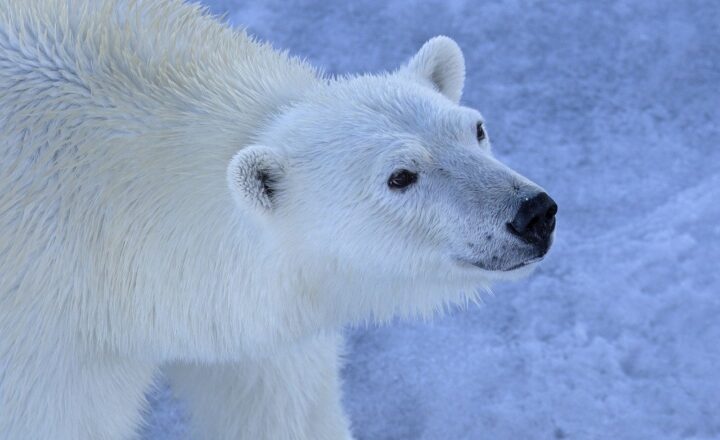The Role of Volcanic Islands in Creating Unique Ecosystems and Landscapes
November 16, 2024

Volcanic islands are among the most fascinating features on our planet. Rising dramatically from the ocean floor, these landforms are not just noteworthy for their geology and landscape; they also play a critical role in the creation of unique ecosystems. From the Galápagos Islands to the Hawaiian archipelago, volcanic islands exhibit biodiversity and adaptations found nowhere else on Earth.
1. Understanding Volcanic Islands
To appreciate the ecological significance of volcanic islands, it’s essential to understand how they form. Volcanoes can erupt above sea level, forming islands over time as lava cools and solidifies.
There are two primary types of volcanic islands:
- Shield Islands: Characterized by broad, gentle slopes formed by the flow of low-viscosity lava. The Hawaiian Islands are a prime example of shield islands, showcasing expansive landscapes and diverse habitats.
- Stratovolcanoes: These islands feature steeper, conical shapes and are created from alternating layers of lava flow, ash, and other volcanic materials. Many of the Aleutian Islands in Alaska fall into this category.
The formations of these islands not only contribute to their stunning landscapes but also create isolated environments where life can evolve in unique ways.
2. Unique Ecosystems Found on Volcanic Islands
One of the most remarkable aspects of volcanic islands is their ecosystems. Isolation—due to geographic distance from mainland areas—means that species often evolve independently, leading to a high degree of endemism. Endemic species are organisms that are native to a particular location and found nowhere else.
Some noteworthy adaptations seen in volcanic island species include:
- High Extinction Resilience: Species on volcanic islands often have fewer natural enemies and can thrive rapidly after disturbances like eruptions. Their limited range, however, makes them vulnerable to extinction due to changes in climate or habitat disruption.
- Specialized Adaptations: Many organisms here develop unique traits closely linked to their environments. For instance, the giant tortoises of the Galápagos adapted to differing food supplies found on various islands, leading to distinct subspecies based on their habitats.
- Bird Evolution: Many bird species have evolved unique traits indifferent habitats, such as the famous finches of the Galápagos, which showcase variations of beak shapes corresponding to their food sources.
The isolation of volcanic islands promotes evolutionary experimentation, creating biodiversity that can be both vulnerable and exquisite.
3. The Importance of Volcanic Soil
The soils on volcanic islands are rich and fertile due to the mineral content of the volcanic ash and lava. This nutrient-rich environment supports a diverse array of plant life, enabling ecosystems to thrive.
Key characteristics of volcanic soil include:
- High Nutrient Availability: Volcanic soils are high in potassium, phosphorus, and other essential minerals, which are conducive to plant growth, from grasses to towering trees.
- Good Drainage: These soils often have excellent drainage properties, which helps in managing water runoff after heavy rains, allowing for the development of lush forest and unique plant communities.
- Ecosystem Recovery: After volcanic eruptions, these soils can support rapid ecosystem recovery, allowing for a succession of plant species to repopulate an area, which provides habitats for various animals.
The fertility of volcanic soils contributes to notable fruit and vegetable productions, making these islands not just ecological wonders but also agricultural assets.
4. Landscape Diversity on Volcanic Islands
The dramatic geological features created by volcanic activity result in some of the most stunning landscapes on Earth. Features such as:
- Calderas: Formed when a volcano erupts and the summit collapses, creating a large depression. Examples include the Santorini Caldera in Greece, known for its breathtaking cliffside views and vibrant blue waters.
- Lava Tubes: Natural conduits formed by flowing lava, leaving behind intricate tunnel systems. The Lava Beds National Monument in California has impressive examples of such formations, offering unique landscapes and habitats for wildlife.
- Black Sand Beaches: Created by eroded volcanic rock, these beaches contrast vividly with azure waters, providing not only beautiful scenery but also unique ecology, as these areas are often habitat for specialized marine life.
The landscapes of volcanic islands present natural laboratories for geological and ecological study and inspire a sense of wonder among visitors.
5. Challenges Faced by Volcanic Island Ecosystems
Despite their uniqueness, volcanic island ecosystems face several challenges:
- Climate Change: Rising sea levels, changing temperature regimes, and increased storm intensity threaten delicate ecosystems on these islands. Many endemic species are vulnerable due to their limited ranges.
- Invasive Species: Non-native species can disrupt the balance of local ecosystems, outcompeting endemic species for resources. Efforts to control invasive species are essential for preserving native biodiversity.
- Human Impact: Tourism and development can lead to habitat destruction and pollution, putting intense pressure on these ecosystems. Sustainable management and conservation practices are vital to protect these fragile environments.
Protecting the unique ecosystems and landscapes of volcanic islands is crucial to maintaining their biodiversity and ecological balance. Sustainable practices and conservation efforts must be prioritized in order to navigate the challenges faced by these magnificent natural environments.
Conclusion
Volcanic islands offer some of the most remarkable ecosystems and landscapes on our planet. Their formation, the unique biodiversity they host, and the stunning geological features they exhibit showcase nature’s resilience and creativity. By understanding the complexities of these ecosystems and the challenges they face, we can work towards preserving and protecting these remarkable environments for future generations to enjoy and learn from.
As we delve deeper into the marvels of volcanic islands, let us also advocate for their protection, ensuring that their unique ecosystems continue to thrive within this intricate tapestry of life.






